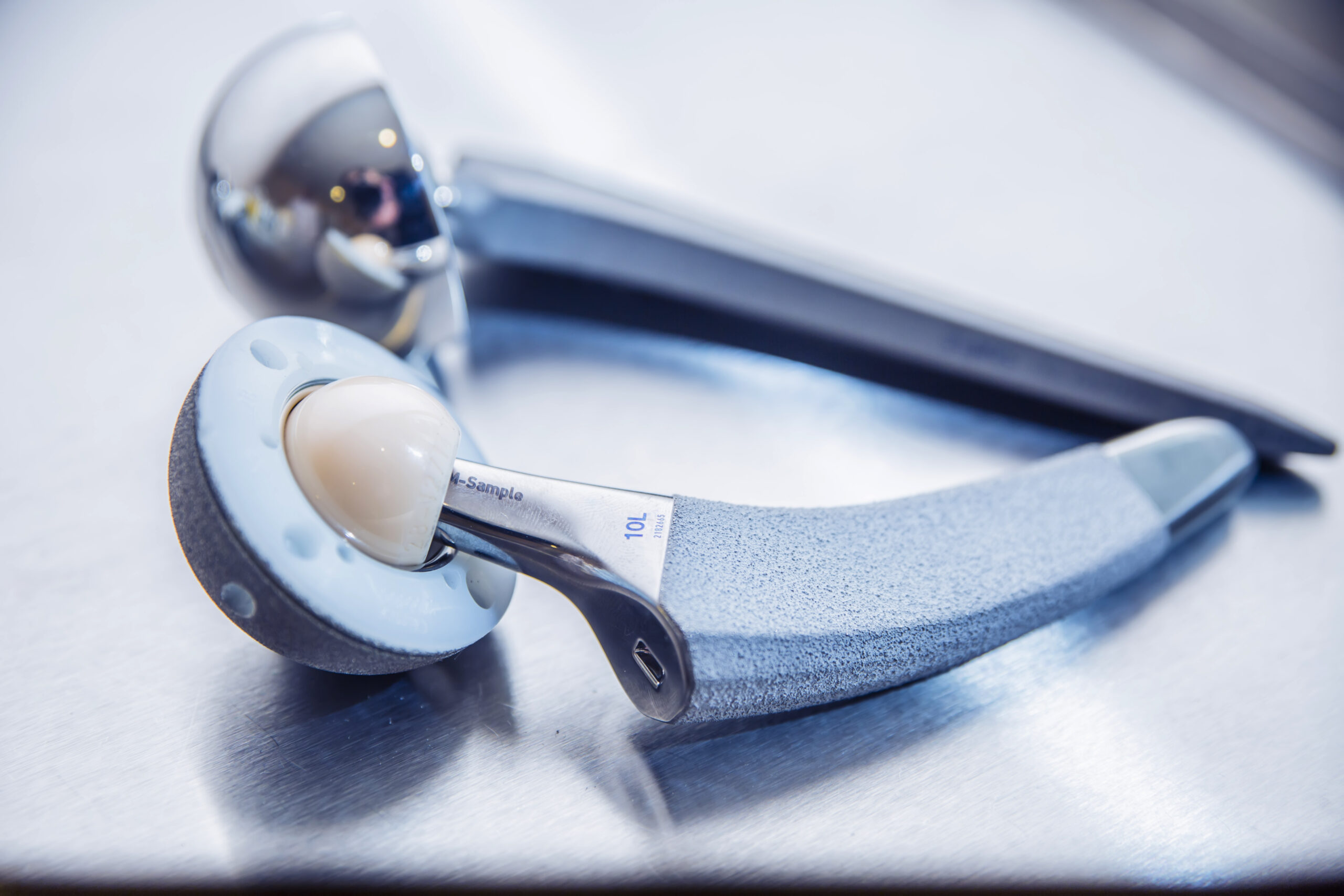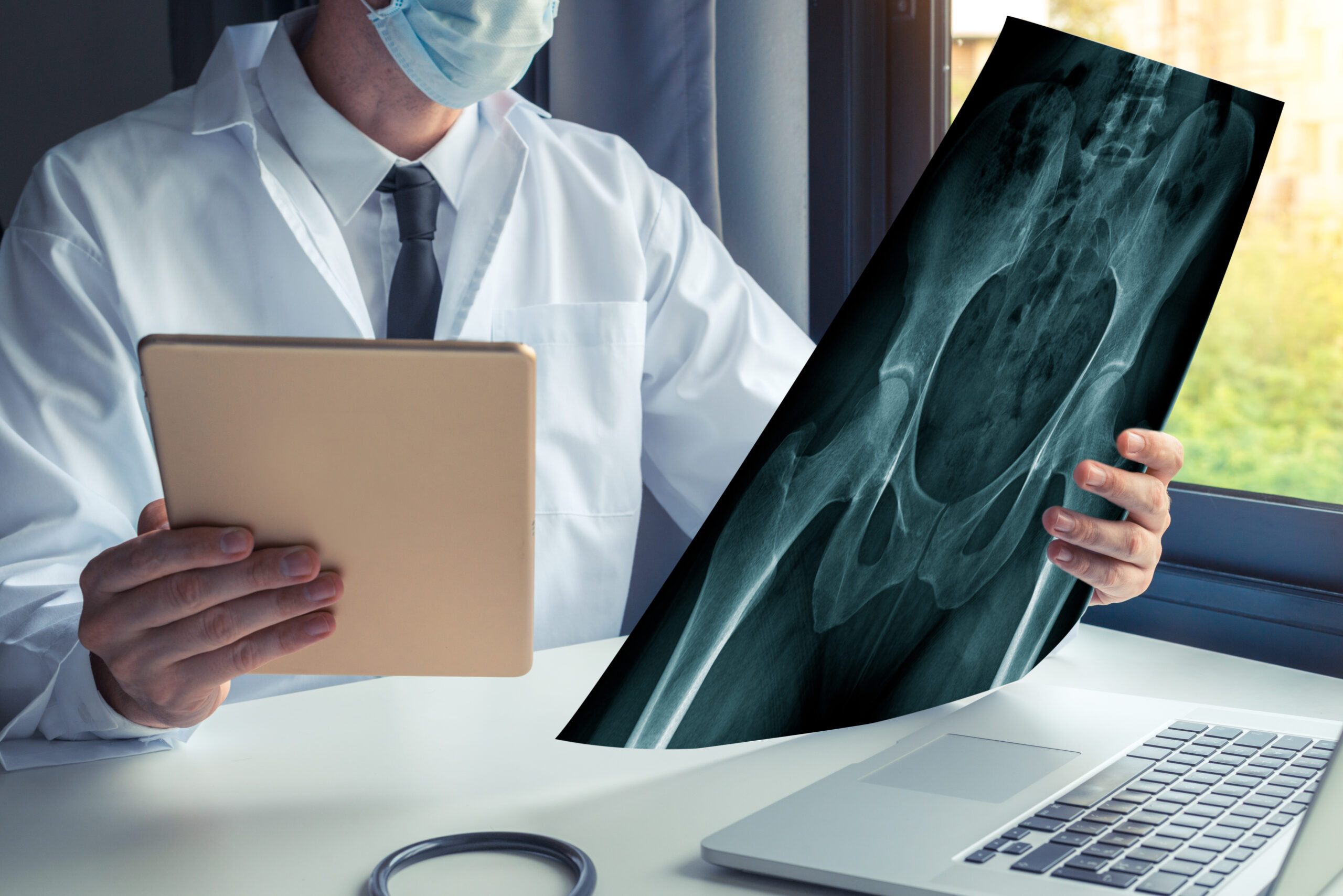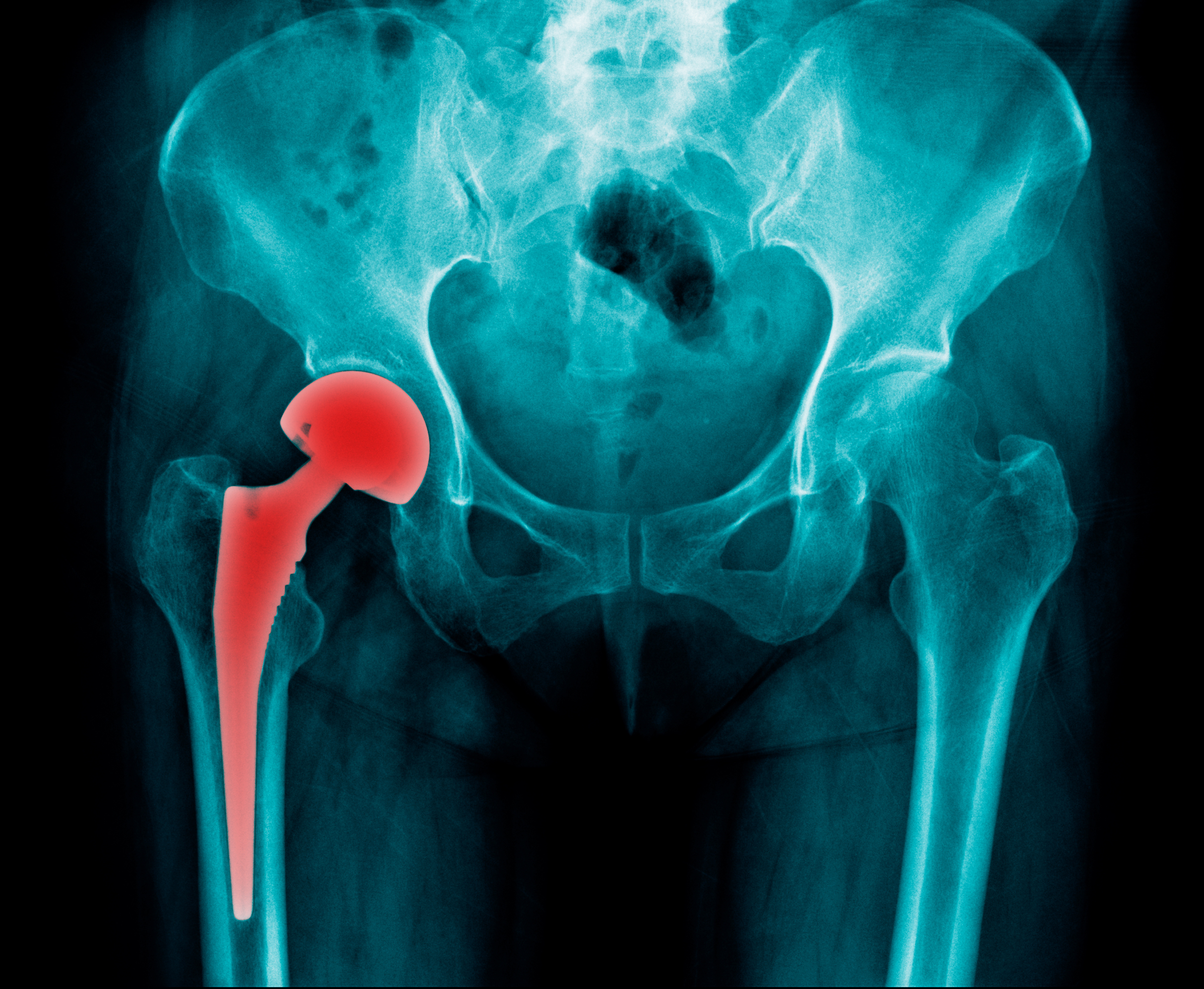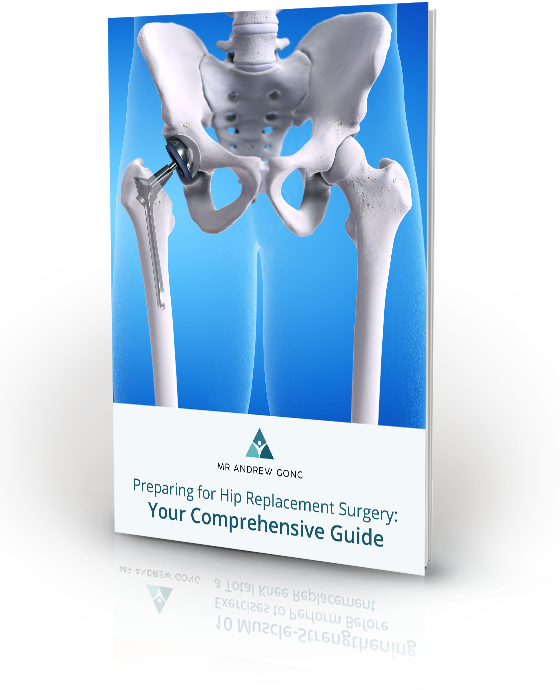An anterior approach has become more popular as it can be less invasive than posterior and lateral approaches. Entering your hip from the front may cause less damage to surrounding muscles and tendons, which in turn leads to a faster recovery.
Not every patient is suitable for an anterior approach but the good news is that the modern posterior approach also has an excellent recovery profile.
If you have been experiencing hip pain, and your doctor has recommended a hip procedure, consider booking a consultation with Mr Andrew Gong, an anterior hip replacement surgery specialist based in the Melbourne area.
What is an Anterior Hip Replacement Technique?
An anterior hip replacement, also known as minimally invasive or muscle-sparing hip arthroplasty, is a surgical procedure in which the damaged bones in the hip joint are replaced with an artificial or prosthetic hip.
An anterior approach total hip replacement is referred to as a “minimally invasive” surgery because it uses less muscle disruption than traditional hip replacement surgeries. This means that the surgeon can work on the joint from the front of the hip instead of from the side or back. This direct anterior approach procedure is considered to be major surgery.
This surgery is less invasive than a traditional hip replacement because the surgeon mainly goes between the muscles and only releases tendons and capsule in order to reach the hip joint. During the surgery, the surgeon will replace the damaged joint with an artificial joint made of metal and plastic components.

When is an Anterior Hip Replacement Procedure Recommended
A surgeon may recommend an anterior hip replacement surgery if any of the following symptoms are experienced:
- Severe hip pain that limits daily activities
- Severe hip pain that does not respond to other treatments such as physical therapy or medications
- Hip instability due to arthritis
- Severe hip deformity
- Fracture of the hip
- Developmental hip dysplasia
- Avascular necrosis of the hip

Patients experience relief from chronic hip pain with anterior hip replacement surgery.
Benefits of an Anterior Hip Surgery
There are several benefits to having a direct anterior hip replacement surgery done as opposed to any other type of hip surgery, these include:
- Improved mobility and range of motion
- Reduced pain
- Quicker recovery time
- Decreased risk of infection
- Return to an active lifestyle
- Reduced risk of dislocation
- Increased stability in the joint
Risks of Anterior Hip Replacements
It is important to be aware of all aspects of an anterior hip replacement surgery before going ahead, including knowing the potential risks. Although rare, complications may arise, which include:
- Joint dislocation
- Infection
- Nerve or blood vessel injury
- Implant failure
- Leg length discrepancy
- Hip joint stiffness
- Loosening of the implant
- Fracturing

Anterior total hip replacement prosthetics are typically made of metal or plastic.
How is an Anterior Hip Replacement Surgery Performed?
The exact procedure for hip replacement surgery can vary depending on the patient’s needs and the type of hip surgery being performed. Generally, anterior hip replacement is done under general anaesthesia or spinal.
The procedure begins with making an incision in the front of the hip, down through the soft tissues. The surgeon will then remove any damaged or diseased bone and cartilage from the hip socket and femur. The socket is then prepared and a titanium shell is inserted with a plastic liner.
The new artificial femoral ball and stem are then also inserted into place and secured via an ingrowth surface on the implant. After the new joint has been secured, the incision is stitched closed and a dressing is applied.
Anterior Hip Replacement Surgery Post-Operative Recovery and Results

Once a direct anterior hip surgery is performed, a patient should be able to return to some light daily activities within six weeks.
The recovery period after an anterior hip replacement varies depending on each individual’s health and age. Most people can expect to return home within one to two days after their surgery, although some people may need to stay in the hospital for several days or weeks.
After returning home, it is important to follow the surgeon’s post-operative guidelines for recovery, including physical therapy and medication. The results of an anterior hip replacement will vary, but many people report marked improvement in their mobility and decreased pain after surgery.
Patients should be aware of any signs of infection or other complications that may arise after surgery and contact their doctor if they experience any concerning symptoms.
Am I a Candidate for Anterior Hip Joint Replacement Surgery?
Your doctor will assess your individual situation to determine if you are a suitable candidate for anterior hip replacement surgery.
They will consider factors such as the severity of your hip joint damage, your general health and any potential risks associated with the procedure.
They may also take into account the following factors related to your overall health before recommending this procedure:
- age
- activity level
- general health and fitness
- lifestyle

Anterior total hip replacement prosthetics are typically made of metal or plastic.
How much does anterior hip replacement surgery cost?
The cost of an anterior hip replacement surgery at any of our Melbourne clinics will depend on several factors. It is advisable to book an initial consultation with Mr Andrew Gong.
He will conduct a thorough assessment which may include X-rays or scans, and can then provide a detailed quotation.
This quotation will include the pricing of the surgical procedure, pricing for the hospital stay and the anaesthetist. We will also advise if any rebates apply for Medicare or other health insurance.
How can Mr Andrew Gong can
help with your hip replacement
Mr Andrew Gong is a fellowship-trained orthopaedic surgeon. With his expertise in utilising the most advanced surgical methods, including minimally invasive and robotic-assisted techniques, he is able to provide comprehensive care to his patients.
From diagnosis to treatment and rehabilitation, he works diligently to help them return to their daily lives.

Our Expert Doctor
Mr Andrew Gong
MBBS, FRACS (Orth), F.A.Orth.A
With two decades of experience in hip replacement surgeries, Mr Andrew Gong is a respected orthopaedic surgeon based in Melbourne. He is a Fellow of both the Australian Orthopaedic Association (AOA) and the Royal Australasian College of Surgeons (RACS), as well as an overseas affiliate member of the American Academy of Orthopaedic Surgeons.
How to Schedule a Consultation
If you would like to schedule an appointment to see Mr Andrew Gong, please do so via the following methods:
Our Locations
- Box HillEpworth Eastern, East Wing Tower
Level 14, Suite 14.3
25 Nelson Road, Box Hill VIC 3128
- HealesvilleGet Well Clinic
408 Maroondah Hwy
Healesville VIC 3777, Australia
- RichmondMelbourne Bone and Joint Clinic
27 Erin Street
Richmond VIC 3121, Australia
Frequently Asked Questions
What are the disadvantages of anterior hip replacement?
Anterior hip replacement has some disadvantages. There is a slightly increased risk of early femoral fracture due to the more difficult exposure. While uncommon, this may result in an early reoperation. There is also the risk of numbness at the front of the thigh due to damage to a nerve called the lateral cutaneous nerve of the thigh during the approach. This may be permanent in 30% of patients. Early hip flexion weakness can also be an issue.
Is the anterior approach better for hip replacement?
No approach can be said to be better than the other at this stage. The most important thing for the longevity and function of a hip replacement is the reproduction of hip mechanics and accurate placement of the implant. The anterior approach is associated with a lower risk of dislocation, decreased pain, and possibly a faster recovery period in the first 2-3 weeks but at 6 weeks, most of the papers show no advantage. However, as noted above, there is a slightly increased risk of femoral fracture.
Who is a good candidate for anterior hip replacement?
A good candidate for anterior hip replacement is someone who has severe hip pain due to hip arthritis, bony deformities, or another hip joint damage that has not responded to non-surgical treatments. Candidates should also be in generally good health, with no other medical conditions that could complicate the surgery and an average or slightly increased body mass index. The anatomy also needs to be favourable
How much should you walk after anterior hip replacement?
It is recommended that you start walking slowly as soon as possible after an anterior hip replacement. You should start with short, 10-15 minute walks and slowly build up to 30-45 minutes of walking each day. You should also talk to your doctor or physical therapist about specific walking recommendations for your individual situation.
Which is a better anterior or posterior hip replacement?
Both anterior and posterior hip replacement surgeries can be beneficial depending on the patient’s individual needs. Ultimately, the best option for a patient will depend on their specific condition and should be discussed with their doctor.
Is anterior hip replacement less painful?
Anterior hip replacement is usually less painful early in recovery than traditional hip replacement but it is still a surgical procedure and stronger analgesics will still be required.
Mr Andrew Gong is located in Melbourne and is able to assist with this type of surgery.
References:
https://www.healthline.com/health/bone-health/anterior-hip-replacement
https://www.mayoclinic.org/medical-professionals/orthopedic-surgery/news/direct-anterior-hip-arthroplasty/mac-20429796
https://www.hss.edu/conditions_anterior-hip-replacement-overview.asp
https://app.moqups.com/gJgrabHvAYjnWNnP50GXd9BmVTl69i41/view/page/a095fab3a https://www.orthopaedicsvictoria.com.au/surgeons/andrew-gong/




